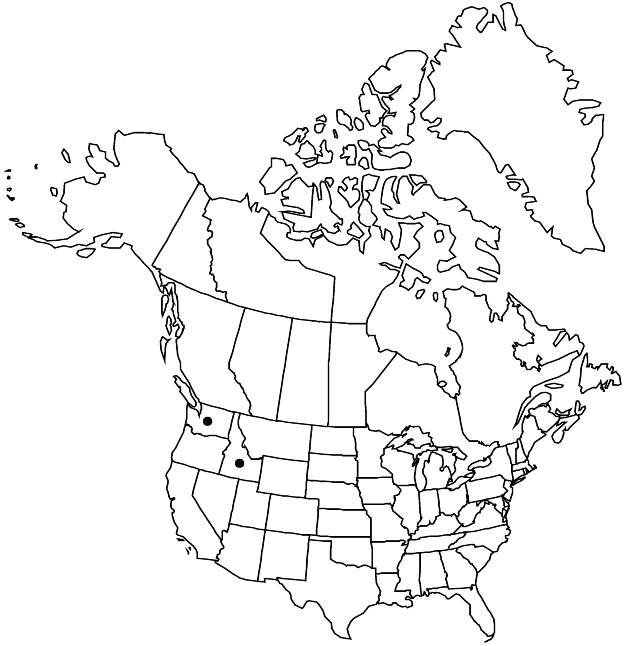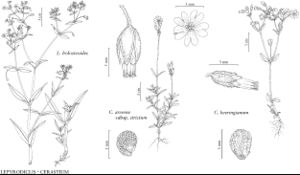Difference between revisions of "Lepyrodiclis holosteoides"
Enum. Pl. Nov. 1: 93, 110. 1841.
FNA>Volume Importer |
FNA>Volume Importer |
(No difference)
| |
Revision as of 20:07, 24 September 2019
Stems 40–100 cm, glabrous or papillate. Leaf blades 1–8 × 0.3–1 cm, margins glandular-dentate. Flowers: sepals 4–5 mm; petals 1–1.5 times as long as sepals. Capsules globose-ovoid, 3 mm, shorter than calyx. Seeds 1.8–2 mm. 2n = 34, 68 (both Asia).
Phenology: Flowering spring.
Habitat: Disturbed areas, pea and wheat fields
Elevation: 500-800 m
Distribution

Idaho, Wash., c, sw Asia, introduced in Europe (Germany), Asia (Japan).
Discussion
Although known in North America only since 1959, Lepyrodiclis holosteoides is a serious menace in pea and wheat plantings, where it grows quickly and often overtops the crops. It is listed as a noxious weed in Washington and Oregon; I am not aware of any documented occurrences in Oregon.
If Lepyrodiclis stellarioides Schrenk ex Fischer & C. A. Meyer is included as a variety of L. holosteoides (see Y. P. Kozhevnikov 1985), North American plants are var. holosteoides
Selected References
None.
